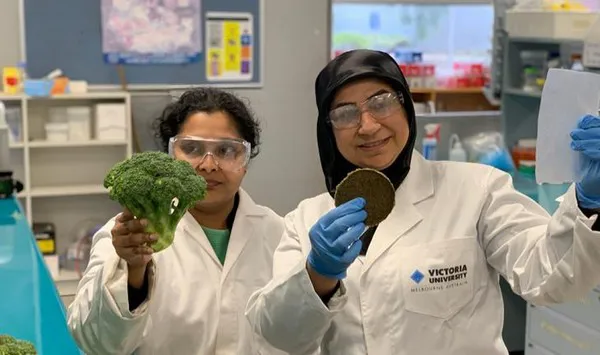Australia’s mounting packaging stockpile could soon shrink with a little help from greener packaging made from vegetable waste.
With an Australian Government target (external link) for all packaging to be reusable, recyclable or compostable by 2025, Victoria University (VU) researchers have been looking at how agricultural waste from vegetables such as zucchini, broccoli, celery and lettuce could be used to create affordable and easily compostable packaging.

Known as ‘biopackaging,’ the global environment-friendly food packaging market is expected to reach about $184 billion by 2026, according to Modor Intelligence(external link) as increasing bans on plastic and growing consumer awareness affect markets worldwide.
As a solution, polymer expert Dr Marlene Cran and her team have been working in the research labs at VU’s Werribee Campus with the unusable produce provided by a nearby Werribee South market-farm. Leaves, stems and rejected produce is normally used as animal feed, composted, or can be sent to landfill where it decomposes and produces methane gas.
Instead, the team has created a range of food packaging products using the waste vegetables.
VU Sustainable Packaging researchers found celery’s high cellulose content makes ideal food trays, whereas zucchini, broccoli and lettuce can be processed into thick films that could be suitable as a tray insert or produce separator. Mycelium – the root structure of mushrooms – can be grown on the partially dried waste materials to make good replacement for styrofoam boxes.
The team’s goal is to use minimal interventions such as intensive drying or the use of excessive additives so that the processes are as natural and inexpensive as possible, and easier to scale-up in the future.
For more information:
Ann Marie Angebrandt
Victoria University
Tel: +61 3 9919 5487
Email: annmarie.angebrandt@vu.edu.au
